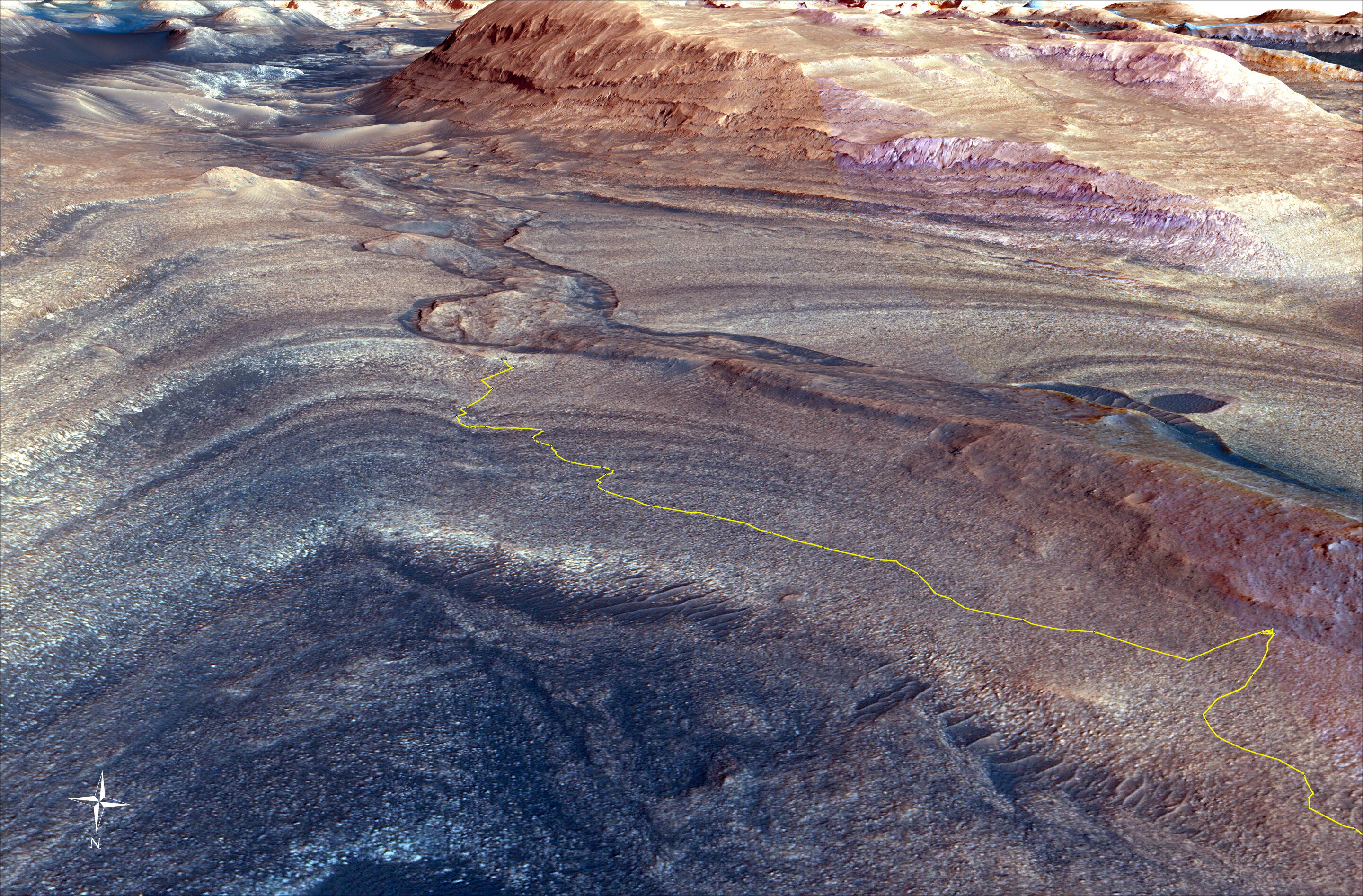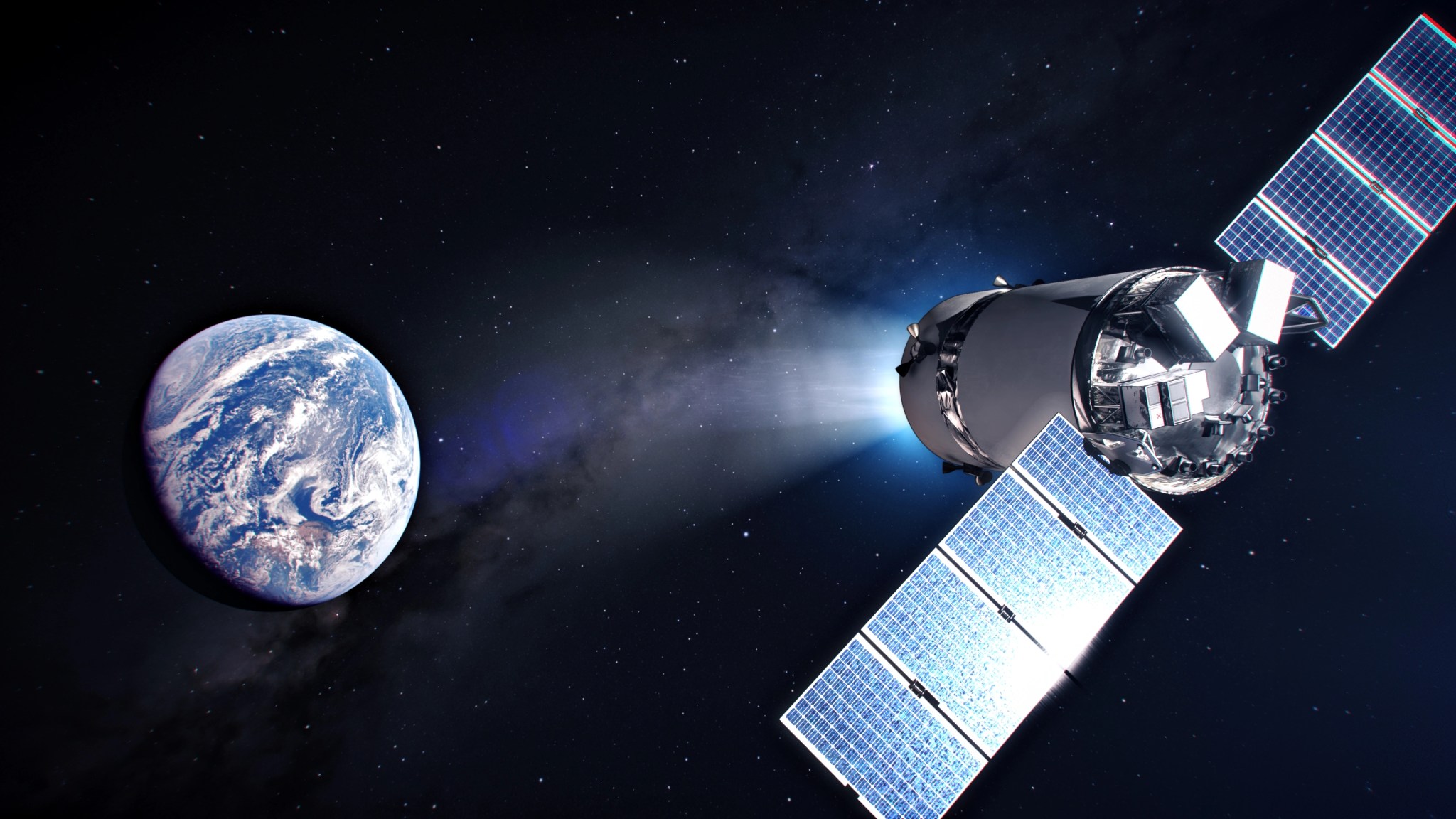NASA's Interest wanderer has started investigating another locale of Mars, one that could uncover more about when fluid water vanished unequivocally from the Red Planet's surface. Billions of years prior, Mars was a lot wetter and presumably hotter than it is today.
Interest is getting another investigate that more Earth-like past as it drives along and in the long run crosses the Gediz Vallis channel, a winding, snake-like component that - from space, in any event - seems to have been cut by an old waterway.
That chance has researchers charmed. The meanderer group is looking for proof that would affirm how the channel was cut into the basic bedrock. The development's sides are steep sufficient that the group doesn't think the channel was made by wind. In any case, flotsam and jetsam streams (quick, wet avalanches) or a waterway conveying rocks and silt might have had sufficient energy to etch into the bedrock.

After the channel shaped, it was loaded up with rocks and other flotsam and jetsam. Researchers are additionally anxious to realize whether this material was moved by flotsam and jetsam streams or dry torrential slides.
Starting around 2014, Interest has been rising the lower regions of Mount Sharp, which stands 3 miles (5 kilometers) over the floor of Hurricane Cavity. The layers in this lower a piece of the mountain shaped north of millions of years in the midst of a changing Martian environment, giving researchers a method for concentrating on how the presence of both water and the substance fixings expected for life changed over the long haul.
For instance, a lower a piece of those lower regions remembered a layer rich for mud minerals where a ton of water once collaborated with rock. Presently the wanderer is investigating a layer improved with sulfates - pungent minerals that frequently structure as water dissipates.
Revising Mount Sharp’s Timeline
It will require a long time to completely investigate the channel, and what researchers realize could overhaul the course of events for the mountain's development.

When the sedimentary layers of lower Mount Sharp had been saved by wind and water, disintegration trimmed them down to uncover the layers noticeable today. Solely after these extensive cycles - as well as strongly dry periods during which the outer layer of Mount Sharp was a sandy desert - might the Gediz Vallis at some point channel have been cut.
Researchers think the rocks and other flotsam and jetsam that hence filled the channel came from high up on the mountain, where Interest won't ever go, providing the group with a brief look at what sorts of material might be up there.
"Assuming the channel or the trash heap were shaped by fluid water, that is truly fascinating. It would imply that genuinely late in the narrative of Mount Sharp - after a long dry period - water returned, and amazingly," said Interest's task researcher, Ashwin Vasavada of NASA's Stream Drive Lab in Southern California.
That clarification would be reliable with quite possibly of the most amazing disclosure Interest has made while driving up Mount Sharp: Water appears to have traveled every which way in stages, as opposed to steadily vanishing as the planet developed drier.
These cycles should be visible in proof of mud breaks; shallow, pungent lakes; and, straightforwardly underneath the channel, disastrous trash streams that stacked up to make the rambling Gediz Vallis edge.
Last year, Interest made a moving rising to concentrate on the edge, which wraps across the inclines of Mount Sharp and appears to outgrow the finish of the channel, recommending both are important for one geologic framework.
Viewing the Channel Up Close
Interest recorded the channel with a 360-degree highly contrasting display from the meanderer's left route camera. Taken on Feb. 3 (the 4,086th Martian day, or sol, of the mission), the picture shows the dull sand that fills one side of the channel and a garbage heap rising simply behind the sand. The other way is the precarious incline that Interest moved to arrive at this area.

The wanderer takes these sorts of displays with its route cameras toward the finish of each drive. Presently the science group is depending on the navcams significantly more while engineers attempt to determine an issue that is restricting the utilization of one imager having a place with the variety Pole Camera, or Mastcam.
More About the Mission

Interest was worked by JPL, which is overseen by Caltech in Pasadena, California. JPL drives the mission for the benefit of NASA's Science Mission Directorate in Washington.

